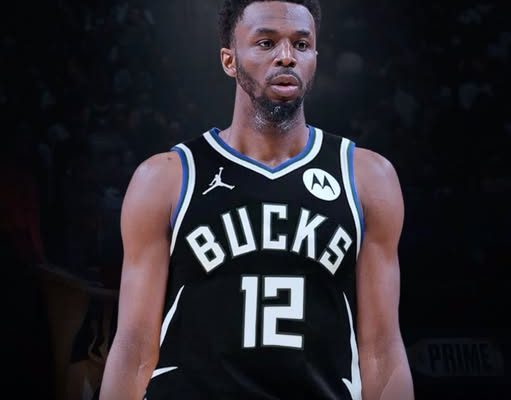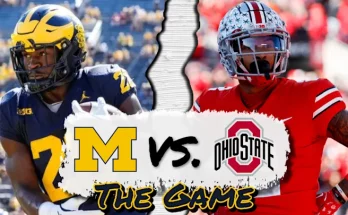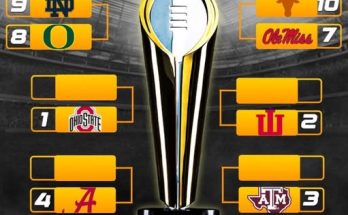The potential trade scenario involving Andrew Wiggins comes at a pivotal time for both the Milwaukee Bucks and the Miami Heat. For the Bucks, who have consistently been contenders in the Eastern Conference, the addition of Wiggins could provide an additional wing scorer and defender alongside Giannis Antetokounmpo and Khris Middleton. Wiggins’ athleticism and ability to create off the dribble could complement the Bucks’ existing core, giving them more flexibility on both ends of the floor. Analysts have pointed out that Milwaukee’s roster, while talented, has occasionally struggled with consistency in perimeter scoring and defending elite wings, making Wiggins a potentially ideal fit.
On the other hand, Miami’s strategy in this offseason seems to be centered on maximizing flexibility and acquiring both immediate impact and future assets. Wiggins, despite his proven talent and championship experience with the Golden State Warriors, carries a high contract that impacts salary cap considerations. By seeking a player who can contribute immediately along with a first-round pick, the Heat are signaling that they are looking for a combination of present-day competitiveness and long-term planning. This dual requirement reflects a growing trend in the NBA where contending teams are increasingly balancing the pursuit of wins with smart asset management.
Wiggins’ career trajectory adds layers of complexity to these trade discussions. Drafted first overall by the Cleveland Cavaliers in 2014, Wiggins’ early years were marked by high expectations and fluctuating performance. After being traded to the Minnesota Timberwolves, he developed into a reliable scorer, and his subsequent move to Golden State saw him contribute to a championship run in 2022. While Wiggins has faced criticism for inconsistency and perceived underperformance relative to his draft status, his ability to impact games on both ends of the floor remains evident. For a team like Milwaukee, which has a clear championship window, adding a player of Wiggins’ caliber, even with contractual considerations, could be a strategic decision to maintain competitiveness against other top Eastern Conference squads such as the Boston Celtics and Philadelphia 76ers.
From a salary-cap perspective, the trade would require careful negotiation. The Bucks would need to structure a deal that not only satisfies the Heat’s demand for an immediate contributor and future draft capital but also fits within their luxury-tax framework. Milwaukee has shown a willingness to be flexible in the past, using trades and strategic signings to maintain a competitive roster without excessively jeopardizing future flexibility. However, Wiggins’ contract remains a significant factor, and any trade would likely require the inclusion of additional assets or salary-matching players to make the deal feasible under NBA rules.
The Heat’s demands also highlight their intent to remain a versatile and deep team capable of contending in the Eastern Conference while maintaining roster options for future seasons. Miami has demonstrated a strong organizational culture, often blending veteran leadership with young, high-potential talent. The requirement of a future first-round pick is not just about planning for the long term but also about retaining bargaining leverage in trade negotiations. Teams like the Bucks, who are in a “win-now” mode, often face a delicate balancing act when trying to acquire established talent while honoring another team’s future asset considerations.
NBA trade rumors also often carry an element of strategic signaling. By publicly exploring Wiggins as a target, the Bucks may be signaling both to the league and their own players that they are serious about making aggressive moves to maximize their championship window. Similarly, the Heat’s stated requirements send a clear message that they will not accept a trade that does not bolster their roster in a meaningful way. This interplay between trade discussions and public messaging is common in the league, as teams look to protect their negotiating positions while also managing the expectations of fans and media.
The implications of a potential Wiggins trade extend beyond just the two teams directly involved. Should the Bucks successfully acquire him, the Eastern Conference dynamics could shift, creating new challenges for contenders like the Celtics, 76ers, and even up-and-coming squads such as the Toronto Raptors and Brooklyn Nets. Conversely, if the trade does not materialize, it could signal that the Bucks may pursue alternative strategies, such as targeting other free agents or exploring different trade packages to strengthen their roster. For the Heat, failing to move Wiggins could result in a period of adjustment as they integrate him fully into their system or continue to explore other options that align with their long-term plans.
Historically, trades involving high-profile players like Wiggins often influence team chemistry and on-court performance in unpredictable ways. While acquiring Wiggins would provide the Bucks with a talented two-way wing, it would also require adaptation from existing players. Giannis Antetokounmpo’s role as the focal point of the offense, Khris Middleton’s playmaking abilities, and Jrue Holiday’s defensive assignments would all need slight adjustments to fully capitalize on Wiggins’ skills. Similarly, Wiggins would need to assimilate into Milwaukee’s system, which emphasizes ball movement, spacing, and defensive rotations. Successful integration often hinges not only on talent but also on leadership, adaptability, and the coaching staff’s ability to optimize rotations and matchups.
For fans and analysts alike, the Wiggins trade saga represents a fascinating case study in modern NBA roster construction. It underscores the tension between acquiring established talent versus maintaining long-term flexibility, the importance of contract management, and the strategic considerations teams must navigate in competitive markets. Trades of this nature also generate substantial media attention, influencing narratives around team identity, player value, and the balance of power within the conference.
In the coming weeks, as the NBA offseason progresses, both the Bucks and the Heat will likely engage in continued discussions, evaluating the feasibility of a trade that satisfies both parties. While no agreement has been reached as of now, the scenario highlights the complexity of high-level NBA transactions and the intricate calculations involved in aligning team needs, player value, salary considerations, and long-term strategic goals. Whether or not Wiggins changes teams, the process provides a window into how elite franchises operate in a highly competitive environment, where small adjustments can significantly impact championship trajectories.
Ultimately, the pursuit of Andrew Wiggins by the Milwaukee Bucks is emblematic of the high stakes involved in NBA roster building. With Giannis Antetokounmpo in his prime and the Bucks aiming for another deep playoff run, adding a versatile wing could be the missing piece to strengthen their title contention. For the Heat, leveraging Wiggins as a trade asset aligns with their broader organizational philosophy, combining immediate competitiveness with careful attention to future planning. The outcome of these discussions will likely influence not just the fortunes of the Bucks and Heat, but also the broader balance of power in the Eastern Conference for the upcoming season.
As the league continues to evolve, trades like this illustrate the interplay between talent evaluation, strategic foresight, and the ever-present pressures of winning championships. For fans, the speculation around Wiggins adds excitement to the offseason, while for executives and coaches, it represents a delicate exercise in negotiation, roster management, and long-term planning. The resolution of this potential trade will be closely watched, offering insights into the priorities of contending teams and the value placed on versatile, proven talent in today’s NBA landscape.



